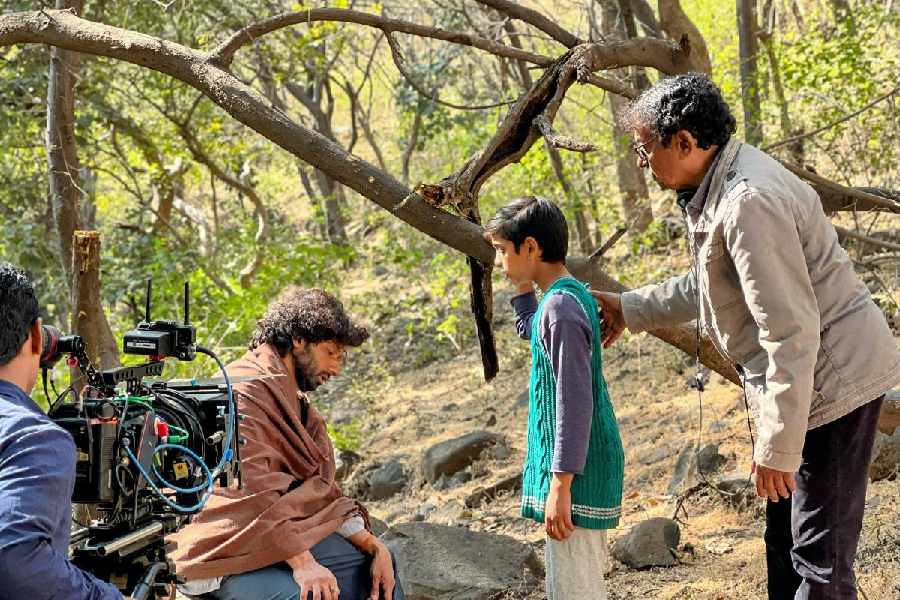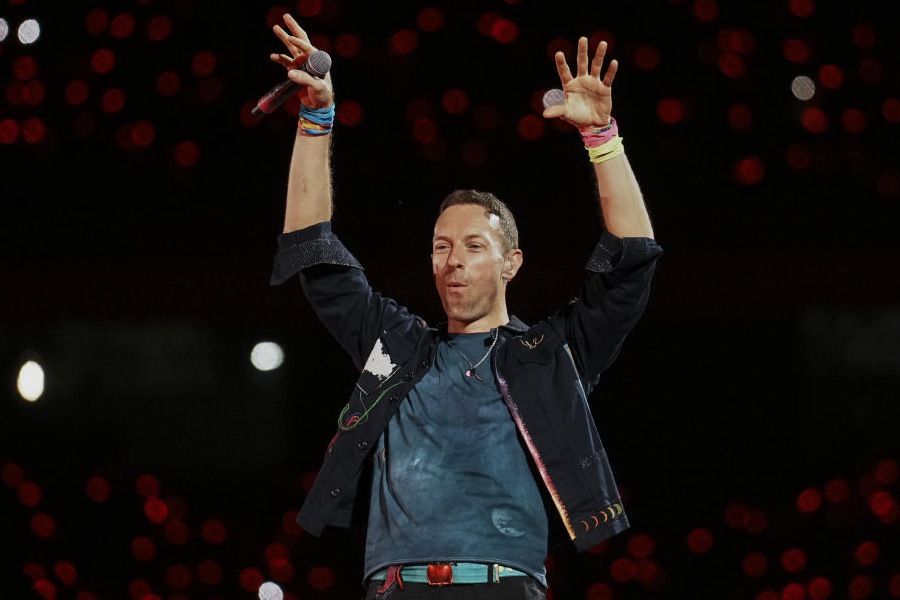A film that is being touted as the first Indo-Italian co-production brought its Italian producer, lead actor and its Indian producer and director to the same table at Nandan last Sunday.
Parikrama, which has been screened at the festival the day before, uses the Narmada parikrama as a narrative framework to tell a story of destiny, development politics and displacement. The religious trek typically starts at the river’s source in Amarkantak, Madhya Pradesh, and continues along the southern bank to Bharuch, Gujarat, where the river meets the Arabian Sea.
Introducing his directorial venture, Goutam Ghose, also the chairman of the festival in its 30th edition, expressed his happiness at being able to hold the Asia premiere of his film in his hometown.

Goutam Ghose directs a shot on the location of Parikrama
The germ of the film was in a short novel, titled The Story of Lala, that his Italian friend and producer Sergio Scapagnini wrote about his encounter in Bombay with a young street vendor.
The tri-lingual film, Ghose explained, had an Italian part added to the book’s plot as he had brought in the figure of an Italian filmmaker Alessandro, who specialises in documenting environmental displacement. Alessandro, played by Marco Leonardi, wanted to make a film on the circumambulation of the mighty river, now dammed by human interference. A single father, he had to leave behind at home a school-going boy, who was recently rendered motherless.
“We had shot the Italian part in January 2020 when Covid struck. Italy was the second country to be affected and we escaped their lockdown by just a week,” Ghosh said, pointing to his Indian co-producer Sukalyan Roy and himself.
The pandemic put a spanner in the works, stalling the film for two and a half years. “That meant the teenage boys we had auditioned in 2019 for the part of Lala had all grown up. So we had to audition again in Indore,” he said.

Chitrangda Singh and Aryan Badkul in a scene from Parikrama.
Though Aryan was low on the casting team’s preference list, Ghose picked Aryan Badkul for the role of “a little big man” thrust into experience from the age of innocence by what he calls “hamara naseeb”.
“He was the shiest of the lot but I interacted at length with him, treating him as an equal, till he was comfortable. He had never acted, not even on stage. But I had found my Lala,” Ghose said, smiling at the youngster with expressive eyes, seated next to him who had played a street vendor displaced by development as the dam caused village after village on the riverbanks to be flooded.
“The river has suffered a lot as has the boy. It is a challenge for the pilgrims as they can’t walk along the riverbank anymore,” said Ghose adding that he used the Italian subplot to create a metaphor. Alessandro’s son is motherless just as Lala has lost his motherland. “It is a cinematic journey in cinematic time and space where one’s past can easily enter the present experience. Cinema can manipulate time,” Ghose pointed out, explaining why he does not want to be a storyteller. “I tell cinema. That has its own language. A serious audience can read cinema like a reader reads a novel,” Ghose, a prominent figure in India’s parallel cinema movement, reasoned.
The 114-minute film, in English, Hindi and Italian, also starring Chitrangda Singh in a major role, is expected to release in India in early 2025.











